
Global Warming 13-State Wildfires – Inciweb
|
|
||||||
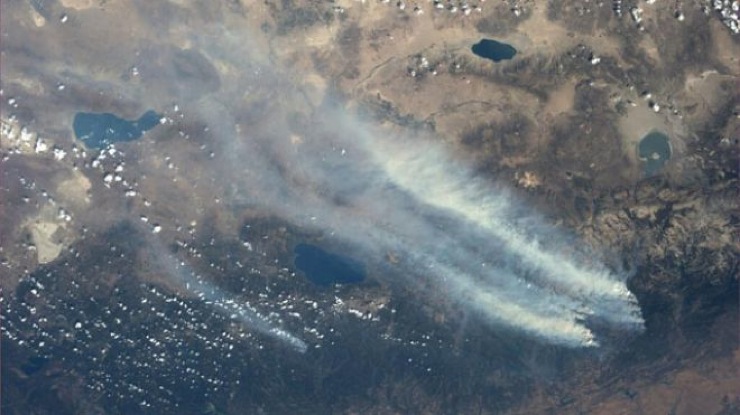
The 2013 Rim Fire photographed by astronaut Karen Nyborg from space. Fires in California post global warming (Rim Fire, Big Bear Fire, Station Fire) burn until rains and snows put them out in fall (with some manual help). The burned forests gone, the first things to start re-growing are foreign man-imported weeds. The largest fire in California's history, the Station Fire was arson-ignited during a decade of global warming ramifications.
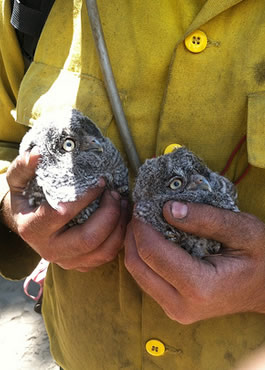
Baby Owls
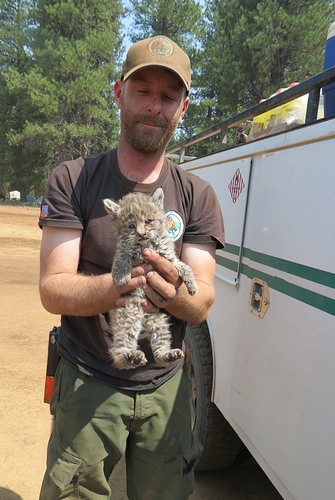
Baby Bobcat
This acmemapper link shows much of the Central California forests I backpacked in as a teenager. Everything in the map link that “looks green” are forest trees fuel, brown is native chaparral fuel, starting around Caliente (next to Bakersfield) and continuing North to Paradise and beyond. The forests between Caliente and Paradise are extremely beautiful, extremely biodiverse and extremely flammable in global warming drought.
Sylvan sanctuary, extremely biodiverse forests stuck in global warming drought and heat – with more acres burned the past 10 years than burned in the previous 50+ years. Many of these fires sterilized seeds in the soil and little is growing back. Much of the Angeles and San Bernardino forests will take 150-200 years to "regenerate". The Rim fire is turning out much the same, may burn into November or December 2013.
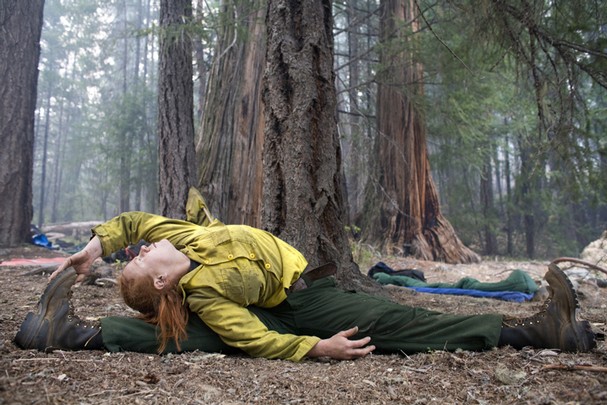
Red-head Woman on Carey Fire. One way of interpreting the photo: Too much Gatorade can cause feinting and a trip to the hospital; not enough electrolytes during intense physical exertion in hot weather in a fire zone can cause excruciating muscle cramps. Imagine extreme fatigue, needing sleep and having cramping feet, cramping gluteal and calf-muscles.
Some news reports list 62 fires in 13 western US states; not to be picayune, but most “fire resources managers” do not count “under 1000 acres” as “a fire”. The mountains above my doctor’s office burned today, well under 1,000 acres and not listed as “an incident”.

Colorado Bureau Land Management BLM Firefighters.
One other way to look at it is the crews sending out food, firehouses, etc. often go home with blisters on all ten toes and both heels – even though they are not “on the fire”. The firefighters are both assorted paid hotshots, paid forest service and BLM and inmates. The inmates (male and female) "earn" less than $1 per hour. Every year more and more women work as 'regular' (paid, non-inmate) hotshots.
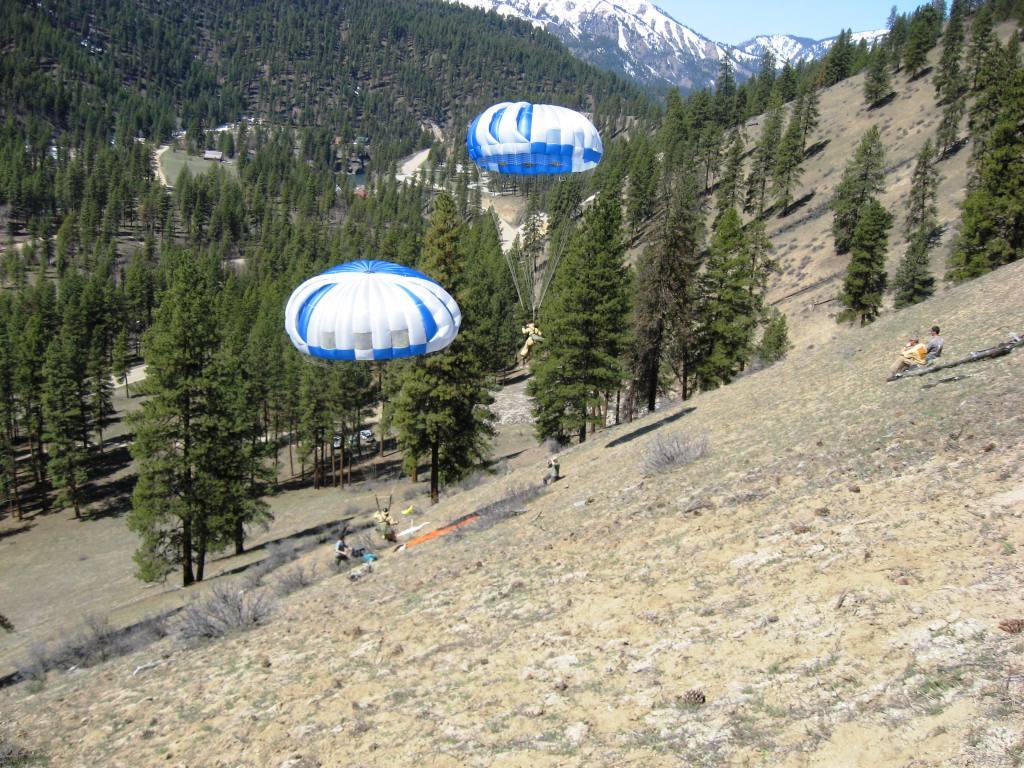
Boise Smokejumpers - Those Who Parachute Into Where Others Are Evacuating From
California’s six-largest of many fire incidents:
Rim Fire Wildfire Stanislaus National Forest Active 184,481 acres
Mountain Wildfire San Bernardino National Forest Active 27,531 acres
American Wildfire Tahoe National Forest Active 25,520
Orleans Complex Wildfire Six Rivers National Forest Active 21,217 acres
Salmon River Complex Wildfire Klamath National Forest Active 14,720 acres
Spring Peak Wildfire Humboldt - Toiyabe National Forest Active 14,230 acres
Corral Complex Wildfire Six Rivers National Forest Active 11,772 acres
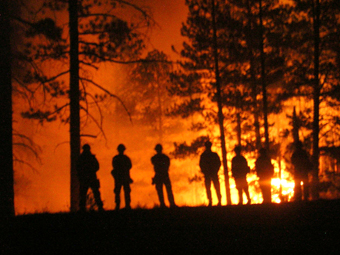
Kaibab Northern Arizona Hotshots
There are more wildfires than largest listed above in California, as well as at least 12 other states inundated with fire– lightening strikes, arson, hot, dry weather, accidents, etc. If fires start (or current fires get larger) personnel and equipment is shared with all 50 states and US territories. If Hawaii has bad fires tomorrow, “borrowed” Alaskan firefighters and equipment could leave California to be shared elsewhere. The other states and their fires/firefighters are important, simply wrote about what I know best. Quenching rains and snows can come as early as late September, as late as December. 12-13 currently burning western states are on (sad, tragic) probable course to set fire records for numbers of fires, acres burned, length of 2013 fire season, etc. Put bluntly, 13-15 states are drought, hot weather, climate-change-affected and filled with fuel. Places many grew up fishing, four wheeling, etc. are now dry tinder under dry lightening storms.
To learn where fires are, whether they are active or inactive and measured acreages go to http://inciweb.org/, a site used by the firefighters themselves. Inciweb updates so fast it is almost in real time. The fires above are apt to become much larger and some (Rim, etc.) will burn until first rain/first snow.
http://www.olivebiodiesel.com/altnews/

